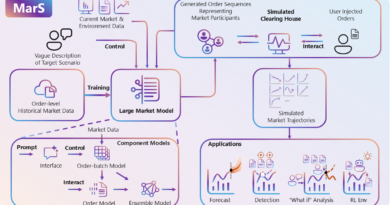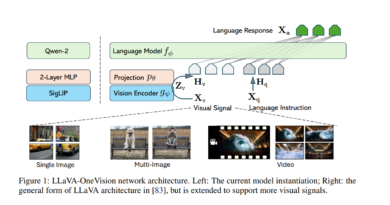Maximizing Contextual Information: The IN2 Training Revolution
Language understanding has made significant progress in recent years, with the advent of large language models (LLMs) such as GPT-4-Turbo. These models have the ability to process extensive context, allowing for a better grasp of the information presented in a given text. However, a challenge arises when it comes to effectively utilizing information that is found in the middle of the context. This lost-in-the-middle challenge hinders tasks like Needle-in-the-Haystack and passkey retrieval, as the model tends to overlook crucial information in the middle.
To address this challenge, researchers from IAIR, Xi’an Jiaotong University, Microsoft, and Peking University have introduced INformation-INtensive (IN2) training. IN2 training is a novel approach that aims to teach long-context LLMs to fully utilize the information throughout the context, not just at its edges. By doing so, the researchers have revolutionized long-context language understanding and bridged the performance gap between open-source models and proprietary ones.
The Lost-in-the-Middle Challenge
When processing long-context language understanding, LLMs face the lost-in-the-middle challenge. These models can effectively comprehend the information at the beginning and end of the context but struggle to make full use of the information in the middle. This limitation poses difficulties in tasks that require finding specific details within long passages, as the model often fails to extract the necessary information.
To illustrate this challenge, consider the task of Needle-in-the-Haystack. Given a long document, the model must locate and extract specific details or answers from it. While the model may accurately identify the relevant information at the beginning and end of the document, it often overlooks the crucial details buried within the middle portion. This hinders the overall performance of the model in tasks that require comprehensive understanding of long-context language.
Advancements in Training Methods
Recent research efforts have focused on advancing the training methods for long-context LLMs. Two key directions have emerged: data engineering and effective training methods.
Data Engineering
Data engineering plays a crucial role in optimizing the training process for long-context LLMs. This involves various aspects such as balancing, arrangement, instruction, data collection, and quality measurement. By carefully engineering the training data, researchers can create a more robust and comprehensive dataset for training the models. The data engineering process ensures that the model is exposed to a diverse range of context lengths and data types, enabling it to better understand and utilize information across various positions within the context.
Effective Training Methods
Apart from data engineering, effective training methods are paramount to achieving optimal performance in long-context language understanding. These methods focus on optimizing the training process itself through techniques such as position encoding, batching strategy, parameter-efficient training, and novel model architectures. By fine-tuning the training process, researchers can enhance the model’s ability to comprehend and utilize information present in the long-context language.
INformation-INtensive (IN2) Training

INformation-INtensive (IN2) training is a novel approach introduced by a team of researchers to address the lost-in-the-middle challenge in long-context LLMs. This training method employs a purely data-driven approach, utilizing a synthesized long-context question-answer dataset. The dataset consists of concatenated long contexts from multiple short segments, along with corresponding question-answer pairs.
The key idea behind IN2 training is to prompt the model to recognize fine-grained information within individual segments and integrate information from various segments. By training the model using this dataset, the researchers aim to teach the model that crucial information can exist throughout a long context, not just at its edges.
To create the training dataset, the researchers leverage a powerful LLM and a natural language corpus. They generate question-answer pairs by directing the LLM with predefined instructions and raw segments. These pairs are then used to construct the long-context question-answer training dataset, where answers require information from randomly placed short segments within the long context. The dataset is carefully curated to ensure balanced training, with evenly distributed context lengths and a mix of different types of data for different training purposes.
FILM-7B: Leveraging the Power of IN2 Training
One of the notable outcomes of utilizing IN2 training is the development of FILM-7B, a long-context LLM that effectively addresses the lost-in-the-middle problem. FILM-7B is trained using the IN2 training method, allowing it to fully utilize information throughout the context and significantly improve performance in tasks that involve long-context language understanding.
Probing results demonstrate FILM-7B’s robust performance compared to the vanilla Mistral model, highlighting its ability to effectively utilize information across different positions within the context. FILM-7B achieves performance levels comparable to or even better than GPT-4-Turbo, a proprietary model, across various tasks. This sheds light on the potential of open-source models to bridge the performance gap with proprietary ones, paving the way for further advancements in long-context language modeling.
Quantitative analysis using average score and min-max gap metrics on VAL Probing further validates FILM-7B’s effectiveness, particularly in document and code probing tasks. These results underscore the impact of IN2 training in revolutionizing long-context language understanding and its potential to enhance the performance of open-source models.
Closing Thoughts
The introduction of INformation-INtensive (IN2) training marks a significant step forward in addressing the lost-in-the-middle challenge faced by long-context LLMs. By effectively utilizing information throughout the context, FILM-7B, trained using IN2, demonstrates robust performance across various tasks, comparable to or even outperforming proprietary models like GPT-4-Turbo. These findings highlight the potential of open-source models in bridging the performance gap with proprietary ones and pushing the boundaries of long-context language understanding.
The revolutionary impact of IN2 training extends beyond specific models and tasks. It emphasizes the significance of effective training methods and data engineering in optimizing the performance of large language models. Future research in this area can explore further advancements in training techniques, dataset construction, and model architectures to empower long-context language understanding and unlock its full potential.
Check out the Paper. All credit for this research goes to the researchers of this project. Also, don’t forget to follow us on LinkedIn. Do join our active AI community on Discord.
If you like our work, you will love our Newsletter 📰




